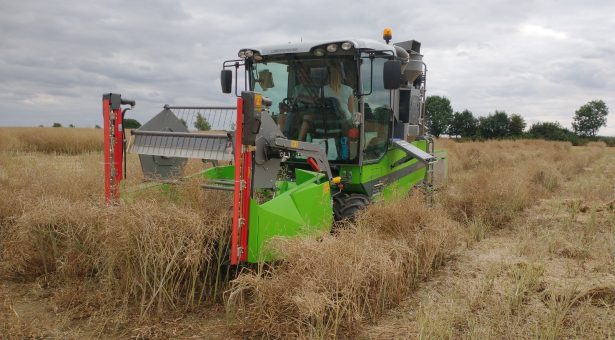Developing Climate Resilient Oilseed Rape

Climate change is challenging our ability to grow crops. We aim to overcome this in oilseed rape through research into the causes of yield instability.
The Challenge
Variation in the weather between growing seasons has particularly large effects on oilseed rape yields, suggesting that it is highly vulnerable to climate change. Poor yielding years reduce the economic viability of the crop and are contributing to farmers deciding against growing oilseed rape, making us more reliant on overseas imports of rapeseed oil.
However, we have discovered that this yield instability is caused by changes in temperature at specific times of year.
Our Research
We know that cold days in winter have become milder and that there are fewer days where the maximum temperature doesn’t rise above 0°C. We have found that if the temperature in early winter (Nov – Dec) is warmer than average, this results in a decrease in yield. A 1% rise in mean temperature is associated with a reduction in oilseed rape yield of 113 kg per hectare.
This time of year corresponds to the first phase of flower development and our research has shown that developing flower buds is delayed by warm weather at this time of year. This chilling promotes more vigorous growth earlier in spring, greater fertility and even the development of larger seeds.
We have identified an oilseed rape variety, called Castille, for which this relationship does not hold true and are using this variety to help us understand how to breed future oilseed rape varieties that maintain high yields in years where the available winter chill is lower.
Our research aims to understand how the climate affects plant reproductive development and seed quality.
One reason yields are lower in the majority of UK oilseed rape varieties is that seed size is reduced in warmer winters. The resilient variety, Castille, whose yield is unaffected by winter temperature maintains its seed size.
Our research, in both the laboratory and the field have demonstrated that a warmer winter temperature, induces flower bud dormancy and delays flowering the following spring. Some of the flowers produced are abnormal resulting in a reduction in the number of seeds produced as well as reducing seed size, the combination of which causes a reduction in yield.
Technology
We have developed innovative in field technology to increase the temperature of field plots to allow us to investigate the link between early winter temperature and yield.
We have also employed state-of-the-art controlled environment rooms which can be programmed to precisely simulate the entire growing season based on real weather data. This allows us to investigate how changes in climate influence changes in gene expression within plants to identify the mechanisms behind the plant responses that we see.
